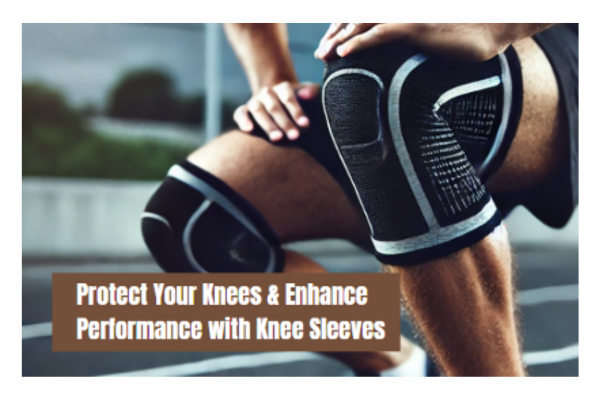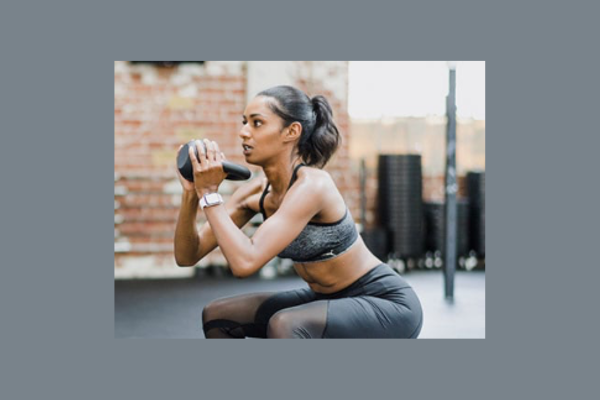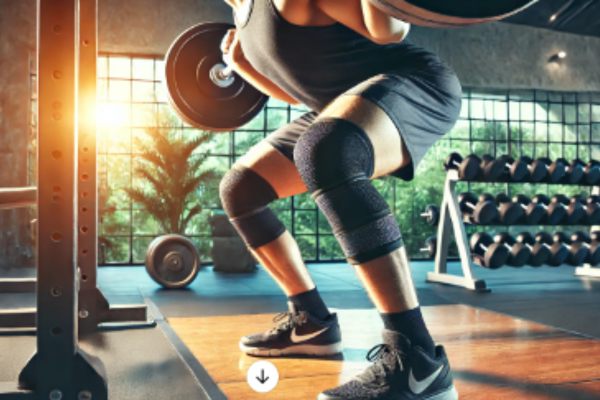Athletes and even regular individuals put their bodies under significant strain when exercising or performing daily activities. The body comprises numerous muscles, bones, veins, and other essential components, including knee sleeves, that work together for proper function.
Because of this complexity, injuries are common, particularly in the joints, where muscles and bones connect to form flexible sections that bend and move.
To help prevent injuries, more people are turning to knee sleeves and braces. But what exactly do knee sleeves do, and how do they differ from knee braces?

Table of Contents
Knee Sleeves vs. Knee Braces: Understanding the Difference
Before wearing knee sleeves, it’s important to understand how they differ from knee braces.
Knee Braces: A knee brace is designed to support the muscles of the leg and provide extra joint protection. Stiffer than knee sleeves, braces are typically prescribed by doctors for individuals recovering from injuries or surgery.
Knee Sleeves: A knee sleeve is a reinforced fabric piece that slips over the foot and leg to sit on the knee. While it offers benefits, it does not provide the same level of protection as a brace. Instead, it focuses on providing:
- Minimal support
- Compression
- Warmth
Choosing between a knee sleeve and a knee brace depends on your needs, sleeves aid in compression and warmth, while braces offer structured support for recovery. Always consider your activity level and any existing injuries before deciding.
Key Benefits of Knee Sleeves
From stability to space efficiency, this hoop is built for performance and convenience. Here are the key advantages of the Silverback NXT that make it a standout choice for basketball enthusiasts:
Here are the key benefits of knee sleeves and how they can support your joints during physical activity.
Minimal Support
Knee sleeves offer mild muscle support by holding the muscles in place. This helps prevent injuries such as torn muscles, which can be career-ending for athletes. Many individuals wear knee sleeves while running, weightlifting, or playing sports like baseball, basketball, soccer, and tennis.
However, knee sleeves do not provide as much support as braces, making them unsuitable for individuals recovering from injuries or dealing with chronic joint pain.
Compression
Compression is a crucial benefit of knee sleeves. By forming a tight seal around the leg, knee sleeves:
- Improve blood flow.
- Reduce muscle pain from rapid movement.
- Enhance muscle recovery.
Not all knee sleeves provide the same level of compression, so it’s important to try different varieties before choosing one. Wearing a high-quality compression sleeve can make a noticeable difference in comfort and performance.
Warmth
Cold joints tend to be stiff and less flexible, which is why warming up before exercise is essential. Knee sleeves provide warmth to the knee joint, improving flexibility and reducing stiffness. The level of warmth varies depending on the material:
- Neoprene: Provides significant warmth and is highly breathable.
- Cloth Sleeves: Offer minimal warmth and compression.
Keeping your knees warm with the right sleeve can enhance mobility and reduce discomfort. Choose a material that best suits your activity and comfort needs.
Knee sleeves are a valuable addition to any workout routine, offering compression, warmth, and mild support. Selecting the right sleeve can help improve performance and prevent strain during physical activity.
When Should You Wear Knee Sleeves?

Although some people wear knee sleeves all the time, they are most beneficial during athletic activities. Consider wearing knee sleeves when:
- Exercising or playing sports.
- Stretching and warming up.
- Engaging in high-impact activities like running or weightlifting.
However, wearing compression clothing all day can have negative side effects, so it’s best to use knee sleeves only when needed.
Types of Knee Sleeves
Knee sleeves come in various types, each designed for different needs and levels of support, which are given as:
- Cloth Sleeves: Cloth knee sleeves are lightweight and provide mild compression and warmth. They are ideal for casual wear and low-impact activities, offering minimal support. While they may not be suitable for intense physical activities, they are comfortable for everyday use.
- Neoprene Sleeves: Neoprene knee sleeves are the most popular type among athletes and fitness enthusiasts. They provide warmth, mild compression, and injury prevention, making them ideal for activities like running, weightlifting, and sports. The material is flexible yet durable, ensuring both support and comfort.
- Knee Wraps: Knee wraps are adjustable sleeves that allow users to control the level of tightness and support. Commonly used in weightlifting and other strength training exercises, they enhance athletic performance by stabilizing the knee joint. These wraps are favored by individuals who require extra reinforcement during heavy lifting.
Choosing the right type of knee sleeve depends on your specific needs, whether it’s for casual use, sports performance, or intense strength training.
Frequently Asked Questions

What is the difference between a knee brace and a compression sleeve?
A knee brace provides rigid support for injury recovery, while a compression sleeve offers mild support, improves circulation, and keeps the joint warm during activity.
Can I wear a knee sleeve all day?
It’s not recommended to wear knee sleeves all day, as prolonged compression may restrict circulation. Use them during exercise or high-impact activities for the best results.
Do knee sleeves help with knee pain?
Yes, knee sleeves can help reduce mild knee pain by providing compression, improving blood flow, and offering warmth. However, they are not a substitute for medical treatment.
How tight should a knee sleeve be?
A knee sleeve should fit snugly without cutting off circulation. It should provide firm compression while allowing for comfortable movement.
Are compression sleeves good for running?
Yes, compression sleeves can benefit runners by reducing muscle fatigue, improving circulation, and offering mild joint support. They can help with performance and recovery.
Do knee sleeves prevent injuries?
Knee sleeves can help reduce the risk of minor strains and discomfort, but they do not prevent serious injuries like ligament tears. Proper technique and conditioning are essential for injury prevention.
Conclusion

Basketball is a high-impact sport that puts a lot of strain on the knees, making support essential for players. Wearing a knee sleeve is a great way to improve athletic performance and keep yourself comfortable when doing any sort of physical activity. While many individuals prefer knee sleeves for athletic activities, you can also wear them if your joints are weak and you want some extra compression and warmth throughout the day.
Not to wear them all day because they can get a little uncomfortable at that point. Just remember to do some research before purchasing any variety and see if you can test some out before settling on a make, model, and style.
What’s Next
Now that you know what knee sleeves do, you can turn your attention to getting answers to the other burning questions in your mind. If you’re interested in more answers, tips, tricks, and more, don’t miss our essential advice for beginners. We post informative and entertaining information about every subject a baller needs to know about. We upload original content on a regular basis tailored to our audience’s needs.
